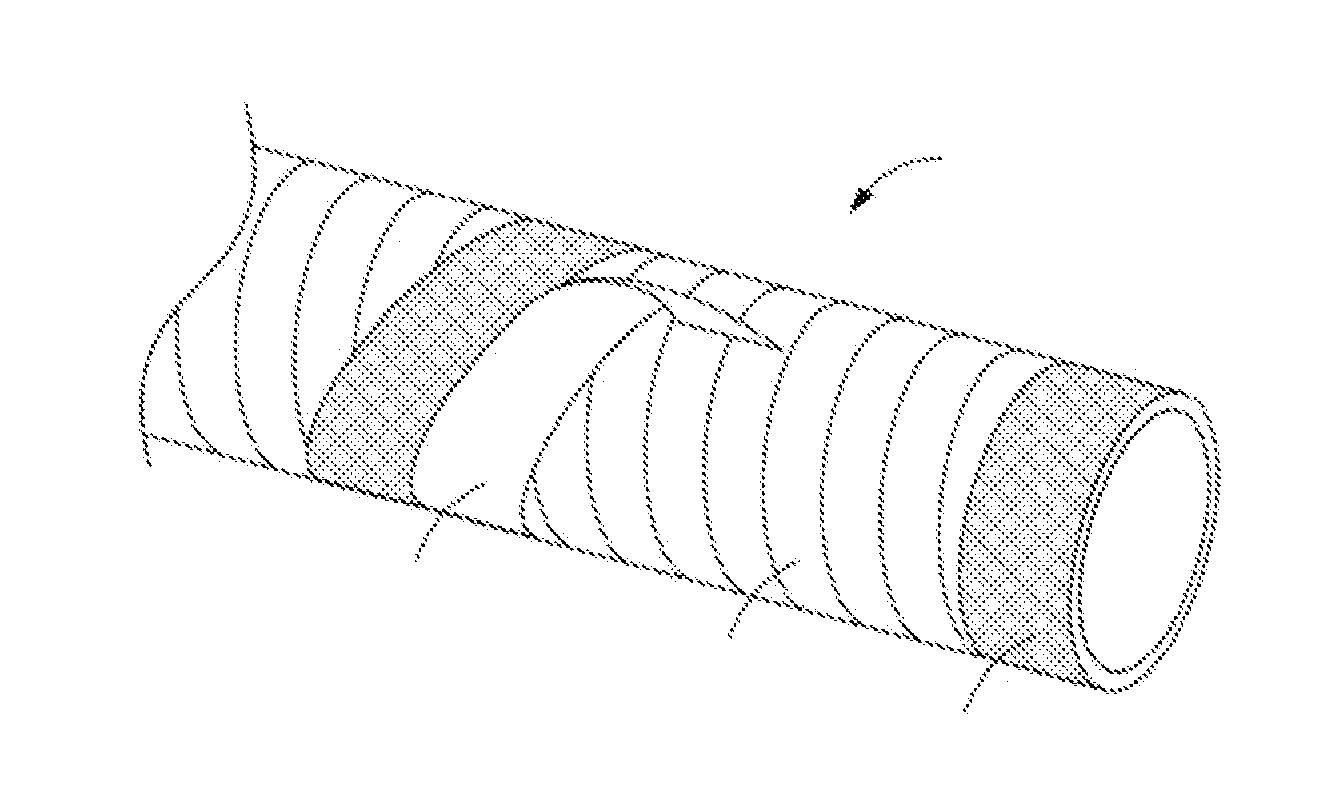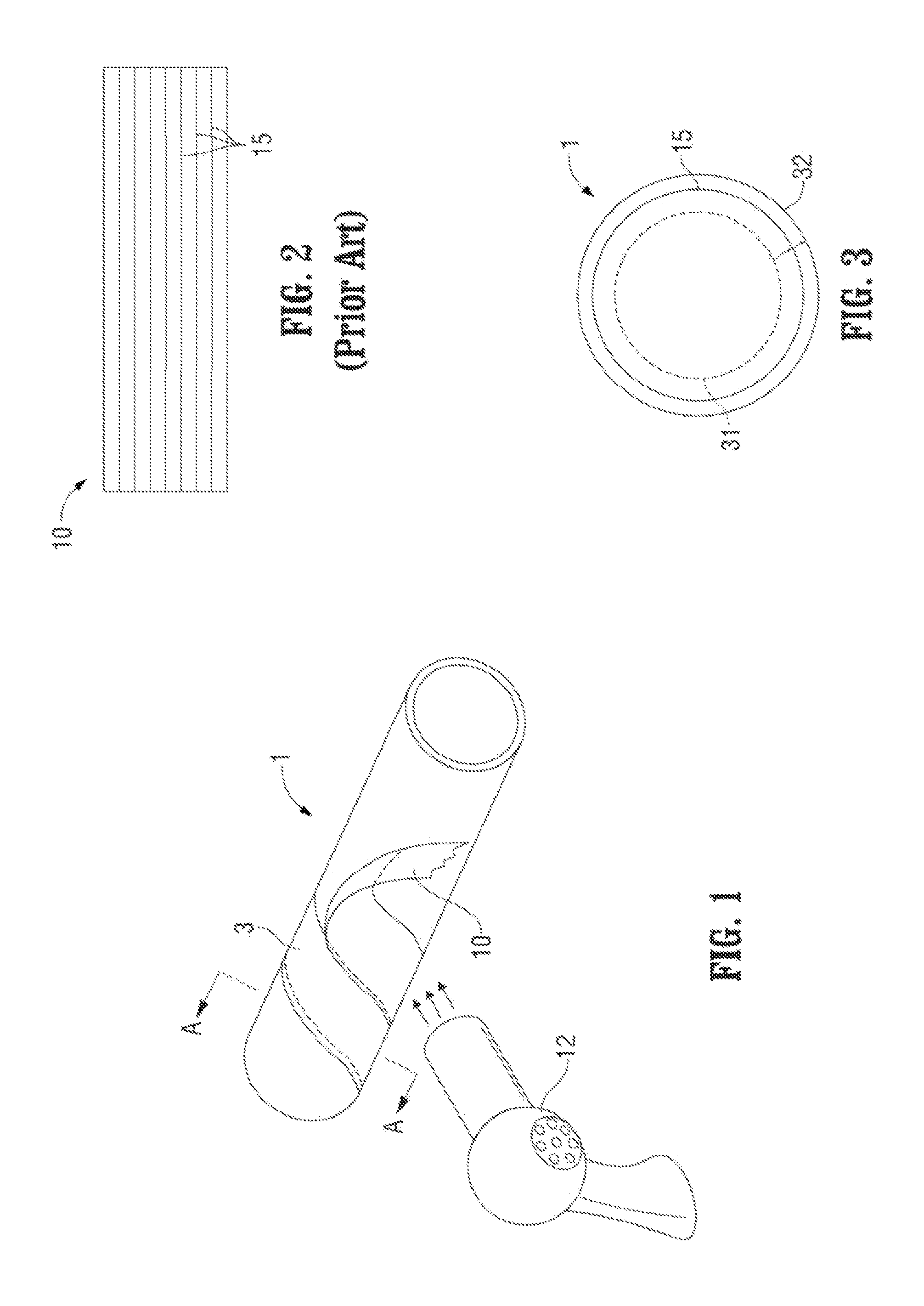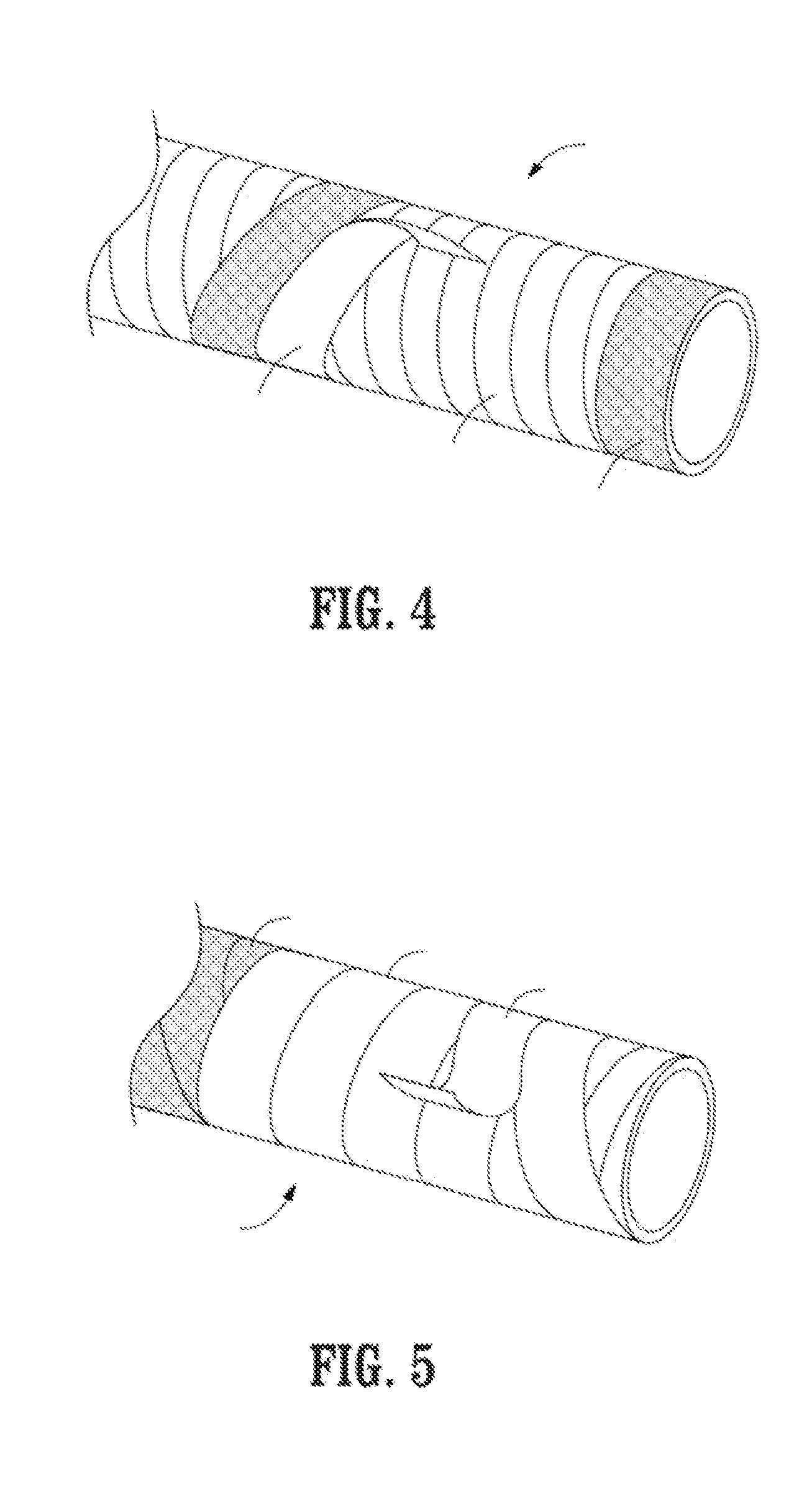Method for manufacturing a reinforced composite pipe
a technology of thermoplastic pipes and composite pipes, which is applied in the direction of pipes, mechanical equipment, other domestic objects, etc., can solve the problems of many areas where oil and gas reservoirs exist, damage to the environment, and the inability to exploit them, so as to reduce the risk of leakage, the effect of easy deployment and or removal of the piping system
- Summary
- Abstract
- Description
- Claims
- Application Information
AI Technical Summary
Benefits of technology
Problems solved by technology
Method used
Image
Examples
Embodiment Construction
[0025]In FIG. 1, a thermoplastic pipe or tube 1 is shown. In one embodiment according to the present invention, the pipe 1 is a thin walled high density polyethylene pipe. Unlike traditional prior art thick walled thermoplastic (e.g., polyethylene) pipes used for fluid / gas transport for oil and gas applications, the pipe 1 according to the present invention, has a thickness of less than 0.5 inches and preferably less than 0.25 inches. Due to the pipe's thin wall, the pipe 1 is flexible. Furthermore, the thin walled pipe 1 would not be able to withstand the pressures and other factors in oil and gas applications, where in one embodiment fluid pressures exceed 200 PSI. For reinforcement, the pipe 1 is wound with a fiber tape 10. In one embodiment, the tape 10 is made of a similar material to the pipe, such as a high density polyethylene thermoplastic tape. The tape includes continuous fibers 15 that in one embodiment, as shown in FIG. 2, are taut and run along the length of the tape. ...
PUM
| Property | Measurement | Unit |
|---|---|---|
| thickness | aaaaa | aaaaa |
| weight ratio | aaaaa | aaaaa |
| thickness | aaaaa | aaaaa |
Abstract
Description
Claims
Application Information
 Login to View More
Login to View More - R&D
- Intellectual Property
- Life Sciences
- Materials
- Tech Scout
- Unparalleled Data Quality
- Higher Quality Content
- 60% Fewer Hallucinations
Browse by: Latest US Patents, China's latest patents, Technical Efficacy Thesaurus, Application Domain, Technology Topic, Popular Technical Reports.
© 2025 PatSnap. All rights reserved.Legal|Privacy policy|Modern Slavery Act Transparency Statement|Sitemap|About US| Contact US: help@patsnap.com



